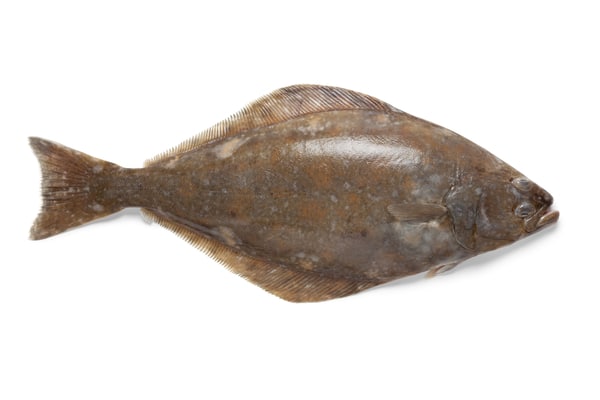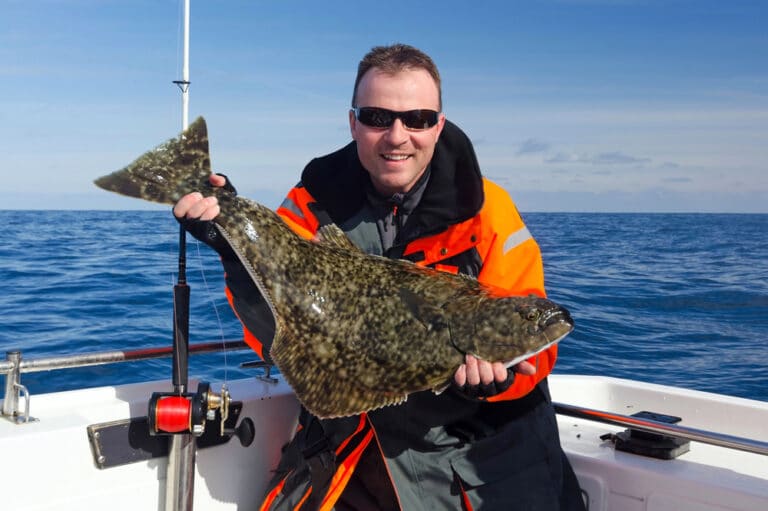The Key To Success, Halibut Fishing in San Francisco bay
Recently, halibut fishing in San Francisco Bay has been attracting people of all ages. Experienced anglers and newcomers alike are flocking to have a go at catching this game fish. And why not? Halibut is one of the most exciting fish to catch.
Halibut tend to put up a good fight when you try to reel them in. Many anglers find halibut fishing to be an exhilarating experience. It is one of the most sought-after fish in the bay area, particularly for their good eating qualities.
Table of Contents
What are halibut and how do I catch them?
Halibut is the largest flatfish in the world. The common name “halibut” usually pertains to three species of big flatfish. They are found in the North Pacific, North Atlantic, and Arctic Oceans. The Pacific Halibut (Hippoglossus stenolepis), is caught in the San Francisco Bay area. Atlantic halibut’s scientific name is (Hippoglossus hippoglossus). While the Greenland halibut is (Reinhardtius hippoglossoides).
California halibut (Paralichthys californicus) or California flounder is another species of flatfish. This fish is smaller than the Pacific halibut. Most halibuts will belong to either right-eyed or left-eyed flounder families. California halibut is a member of the left-eyed flounder family, but has an almost even distribution of right-eyed and left-eyed.
The California Halibut can grow to 60lb (27kg) and up to 5ft long (1.5m) in length.

Halibut in San Francisco Bay
The San Francisco Bay has two species of halibut in its waters. The Pacific and the California halibut with the latter being more common. Most anglers refer to these two species as halibut. Anglers sometimes refer to them as “buts”.
Halibut are both good eating fish and good sport fish. It is a prized catch for both commercial and recreational anglers. As food, halibut’s firm, white, savory meat, and smooth texture make it a seafood lover’s dream. It is rich in Omega-3 fatty acids and is a good source of protein. It is easy to cook and is often baked, poached, grilled, or steamed.
Halibut are aggressive ambush predators. They attack and feed on small fish. Particularly anchovies, smelt, shiner perch, sardines, and squid.
They have big mouths and sharp teeth. While their coloring allows them to camouflage against the seafloor when awaiting prey. They also use this to evade hunters. Halibut are muddy-brown or brown-black.
Halibut Fishing in the Bay Area
Halibut fishing in San Francisco bay is possible all-year-round. But, April until late October are the best times to go. When news of a halibut bite spreads, the bay will likely fill with boats looking for this prized catch. To find when halibut are biting check out :

Tips for Catching Halibut
Experienced anglers will have various tips for catching halibut. The two most common methods when catching halibut are trolling and drifting. Both these methods involve a baited line in a slow-moving boat.
With trolling, the direction of the boat is controlled by the driver. When drifting, the winds, current and other factors control the boat’s movement.
On charter boats, the most common approach to catching halibut is live bait drifting. Live anchovies, sometimes shiner perch, are often used as baits.
Live bait can be bought in Bay area bait shops during the peak seasons. One thing to note, keeping anchovies alive can be tricky. They need a continuous flow of water, otherwise, they will die rapidly. Fishing supplies and bait around San Francisco Bay
Most halibuts in the Bay area are within the 6-10 pounds to 20-25-pound range. While there may be the occasional 30-pounder trophy. A standard fishing pole is enough when fishing for halibut.
Drifting for Halibut
Halibuts like to stay on the bottom of the seabed awaiting prey. While fishing it’s a must to keep bait in contact with the seabed when drifting. Some anglers like to let out a few more feet of line once they hit the bottom with their rig. Then, they’ll allow the sinker and bait to drag across the seafloor in search of a halibut.
When the halibut bites.Experienced anglers can often tell the kind of fish they caught through its bite. Halibuts, have a so-called “subtle bite”. It is easy to mistake as a bit of movement of the bait or the sinker. It can feel as if something’s only sitting on the bait.
Easy does it when reeling the halibut. You will need a steady hand, calm nerves, patience, and a net waiting to scoop it out. The halibut will almost always be calm right until they’re almost at the surface. When they catch sight of the boat is when they give a fierce fight. They will resist particularly right before they emerge from the surface.
Learn from others who lost their prized catch. Even after they got it out of the water. Halibuts can fight their way back into the water. Be extra cautious when taking them out of the net and unhooking. Make sure not to get your fingers anywhere near the halibut’s mouths. Their sharp teeth can easily cause damage. Use needle-nosed pliers to get the hook out if unsure.
Trolling for Halibut
Trolling is almost the same, but often uses frozen baits. The boat should be moving down the current since halibuts face into the current.
The ideal speed should be between 1 to 3 miles per hour. You must attach a weight to the dropper then free-spool the rig out behind the boat and wait for a signal of a bite. When that happens, it’s time to reel that fish in.
Trolling will often yield more catch than drifting because it can cover more area. For some though, it is not as thrilling as the experience of drifting.
Best spots for catching halibut in San Francisco Bay
For halibut fishing in San Francisco Bay, one key thing that makes it a great halibut habitat– mud. Because the bay’s bottom is primarily soft mud, it’s a great spot for halibut action.
There are numerous spots in San Francisco Bay that allow anglers a good opportunity for catching halibut. Some of the more popular spots are:
- Angel Island,
- Paradise Cay,
- Crissy Field, and
- Berkeley flats.
During late summer until early fall, some spots in South Bay to the North part of San Pablo Bay can be good fishing. Spots such as the Alameda Rock Wall and the Candlestick Point.
Because the terrain is perfect, some consider these good places to fish for halibut.
- South Hampton Shoals,
- Raccoon Straits, and
- Treasure Islands
Halibut are also caught outside the Golden Gate Bridge. You can try the areas around:
- Seal Rocks,
- Baker Beach,
- Muir Beach, and
- Stinson Beach
Learn from others where the Halibut are
At times, the halibuts are spread across the bay. When that happens it’s a challenge to find where they are biting. Learn from others, look around where the other boats are. It’s always a good idea to follow where most of the boats are going. This indicates where the halibut are biting.
Also, when you get a bite in one spot, one good practice is to mark that spot in your GPS or fishfinder. More often than not, the others would be in that same spot.

Keys for catching halibut in San Francisco
One of the best tips for catching halibut is to join a charter and observe what experienced anglers do. This is particularly true for newbie anglers. Try to learn as much as you can from the experts. The next time you go out fishing, you’ll have some working knowledge on how to catch these prized sport fish. Allowing you to have a much better fishing experience.
Fishing in San Francisco Bay for halibut, think about baits, tides, and water clarity. Check out some great San Francisco fishing information here.
San Francisco Bay Tide and Weather Information
Live Bait v Frozen Bait for Halibut Fishing
Live bait will out-perform frozen baits or artificial lures for halibut. Although the use of artificial lures can yield positive results. It’s still common knowledge that the livelier the bait, the more bites you are going to get.
Early in the season, when there aren’t many live baits, some anglers use a technique called “bounce balling.” This technique has been getting some attention because of how successful it can be. This technique came from experienced commercial fishermen, who make a living catching ‘buts.
Bounce Ball Trolling
Bounce balling is a slow-trolling technique. It uses a heavy ball attached near the bait to ensure that it remains on the bottom. When the ball touches the bottom, it attracts the halibut, causing them to see the bait, follow it, and then pounce.
Tides and Swell when fishing for Halibut
Learning about tides and swells always plays a big role in fishing in saltwater. Halibut fishing in San Francisco Bay is no exception. Understand how tides and swells affect halibut, if you want to be successful in catching one.
Generally, when tides aren’t that strong is when you want to look for halibut. This is because it is when water in the bay is clearer.
Halibuts are sight feeders. They rely on their ability to see their prey when hunting for food. They are more active when the water is clear because they can see and ambush their prey better. When the halibut is actively looking for prey is also the best time to be fishing for them. This is when the probability of catching them is higher.
On the flip side, big swells will pretty much discourage bottom fish action.
What gear do I need when fishing for Halibut?
Equipment-wise, a standard rod sensitive enough to pick the subtle bites is enough. While also being able to lift an aggressive fish from the bottom.
Some like to use 2 outfits when drifting for halibut. One is an all-around rod that can handle sinkers up to 8 ounces. The other one should be a light spinning rod or bait caster for a sinker of 1 or 2 ounces. This way, they have the necessary equipment to use whatever conditions they face out there in the bay.

Best times for catching halibut
Halibut comes to the San Francisco Bay to breed in early spring. They follow schools of herrings that travel into the bay during that time.
During late April to early May, is the first major entry of halibut into the bay. June through August are the peak halibut fishing months.
Not surprisingly, halibut fishing in San Francisco Bay is becoming more popular nowadays. The pure adrenaline of taking this prized fish out of the water is enough to get anglers wanting more.
There are lots of fishing charters that cater to interested anglers no matter the age or skill. Find a Fishing Charter in San Francisco
Recreational Fishing Limits for Halibut
California Halibut
The California halibut (Paralichthys californicus) recreational fishery remains open year-round. The daily bag and possession limit is three fish north of Point Sur, Monterey County. The minimum size limit is 22 inches total length.
Check current recreational fishing regulations for San Francisco Bay
Pacific Halibut
The daily bag and possession limit for Pacific halibut is one fish, with no minimum size limit. When angling, no more than one line with two hooks attached may be used.
A Final Word on Halibut Fishing in San Francisco Bay
Whether you join a party or take your boat, you will likely find the experience of halibut fishing in the San Francisco Bay a great one.
For more information on fishing on and around San Francisco Bay check out these articles.
Fishing reports for San Francisco Bay
Tight lines and happy halibut fishing.
